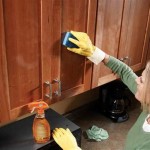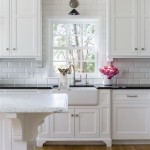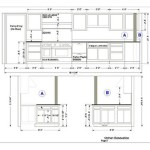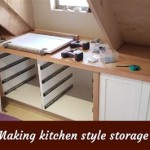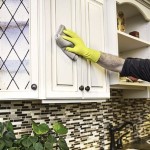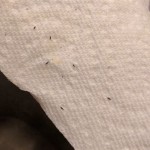Edge Molding for Kitchen Cabinets: A Comprehensive Guide
Edge molding plays a significant role in the overall aesthetic and durability of kitchen cabinets. It provides a finished look, protects the vulnerable edges of cabinet doors and boxes from damage, and can enhance the overall style of the kitchen. Understanding the different types of edge molding, materials, and application methods can help homeowners and contractors make informed decisions during kitchen renovations or new builds.
Several factors influence the selection of appropriate edge banding. These factors include the overall style of the kitchen, the desired level of durability, the budget, and the material of the cabinet boxes and doors themselves. Considering these elements ensures the chosen edge molding complements the design and fulfills its protective function effectively.
Various materials are used in the manufacturing of edge molding. Common materials include polyvinyl chloride (PVC), thermoplastic olefin (TPO), acrylonitrile butadiene styrene (ABS), and wood veneer. Each material offers distinct advantages and disadvantages. PVC is a cost-effective and widely available option, providing good resistance to moisture and wear. TPO offers enhanced heat and impact resistance compared to PVC. ABS is known for its durability and smooth finish, making it suitable for high-end applications. Wood veneer provides a natural, premium aesthetic and can be stained to match the cabinets precisely.
Different profiles, or shapes, of edge molding are available to suit various design preferences. Some common profiles include square, rounded, beveled, and ogee. A square edge provides a clean, modern look. Rounded edges offer a softer, more traditional appearance. Beveled edges create a subtle angled edge, while ogee profiles feature a more elaborate, S-shaped curve, often used in traditional or ornate kitchen designs. The profile selection significantly impacts the overall visual impression of the cabinetry.
The application of edge molding can be achieved through various methods. For large-scale manufacturing, automated edge banding machines are employed. These machines apply the edge banding with precision and efficiency. For smaller projects or repairs, contact cement and hand-held tools can be used. Proper surface preparation is crucial for successful adhesion, regardless of the method employed. This typically involves cleaning the cabinet edge thoroughly and ensuring it is smooth and free of debris.
Thickness variations in edge molding also contribute to the final look and feel of the cabinets. Thicker edge banding can create a more substantial, high-end appearance, while thinner options offer a more streamlined look. The thickness also plays a role in the level of protection provided to the cabinet edges. Thicker edge banding generally offers better resistance to chipping and wear.
Matching the edge banding to the cabinet material is a key consideration in achieving a cohesive design. For wood cabinets, wood veneer edge banding is often the preferred choice, allowing for seamless integration and the ability to stain the banding to match the cabinet color precisely. For laminate or thermofoil cabinets, matching PVC, TPO, or ABS edge banding is typically available.
Maintaining edge molding is relatively straightforward. Regular cleaning with a damp cloth and mild detergent is usually sufficient to keep the edges looking their best. Avoid using abrasive cleaners or harsh chemicals, as these can damage the finish. Addressing any chips or damage promptly can prevent further deterioration and maintain the overall appearance and integrity of the cabinetry.
The cost of edge molding varies depending on the material, thickness, and profile. PVC is generally the most economical option, while wood veneer and more complex profiles tend to be more expensive. Considering the cost alongside the desired aesthetic and durability requirements is crucial for effective budget management.
Several advancements have been made in edge banding technology in recent years. Laser edge banding, for instance, offers a seamless, virtually invisible bond between the edge banding and the cabinet material. Zero-joint edge banding provides a similar effect, creating a sleek and modern look. These advancements provide enhanced aesthetics and improved durability compared to traditional methods.
When selecting edge molding, consulting with a professional cabinet maker or designer can be beneficial. They can provide expert advice on the best options for a particular kitchen design, budget, and desired level of durability. Professionals can also assist with the installation process to ensure a flawless and long-lasting finish.
Properly installed edge molding significantly enhances the longevity of kitchen cabinets. It protects the edges from moisture, impact, and general wear and tear, ultimately extending the lifespan of the cabinetry and maintaining its aesthetic appeal over time. This protection is particularly important in high-use areas like kitchens.
The choice of edge molding plays a crucial role in the overall design aesthetic of a kitchen. It can contribute to a modern, traditional, or transitional look depending on the profile and material selected. This allows for customization and ensures the cabinets complement the desired design scheme.

Adding Moldings To Your Kitchen Cabinets Remodelando La Casa

7 Types Of Cabinet Moldings And How To Use Them Properly

Adding Crown Molding To Kitchen Cabinets Young House Love

10 Types Of Kitchen Cabinet Molding For Your Home

The Easiest Way To Install Crown Molding On Cabinets Kitchen Makeover Renovation Cabinet Trim

Adding Moldings To Your Kitchen Cabinets Remodelando La Casa

Moldings Finish And Trim With Gary Striegler Part 14

9 Molding Types To Raise The Bar On Your Kitchen Cabinetry

Adding Molding To Cabinets Make Them Look Built In Young House Love

Adding Moldings To Your Kitchen Cabinets Remodelando La Casa
Related Posts



